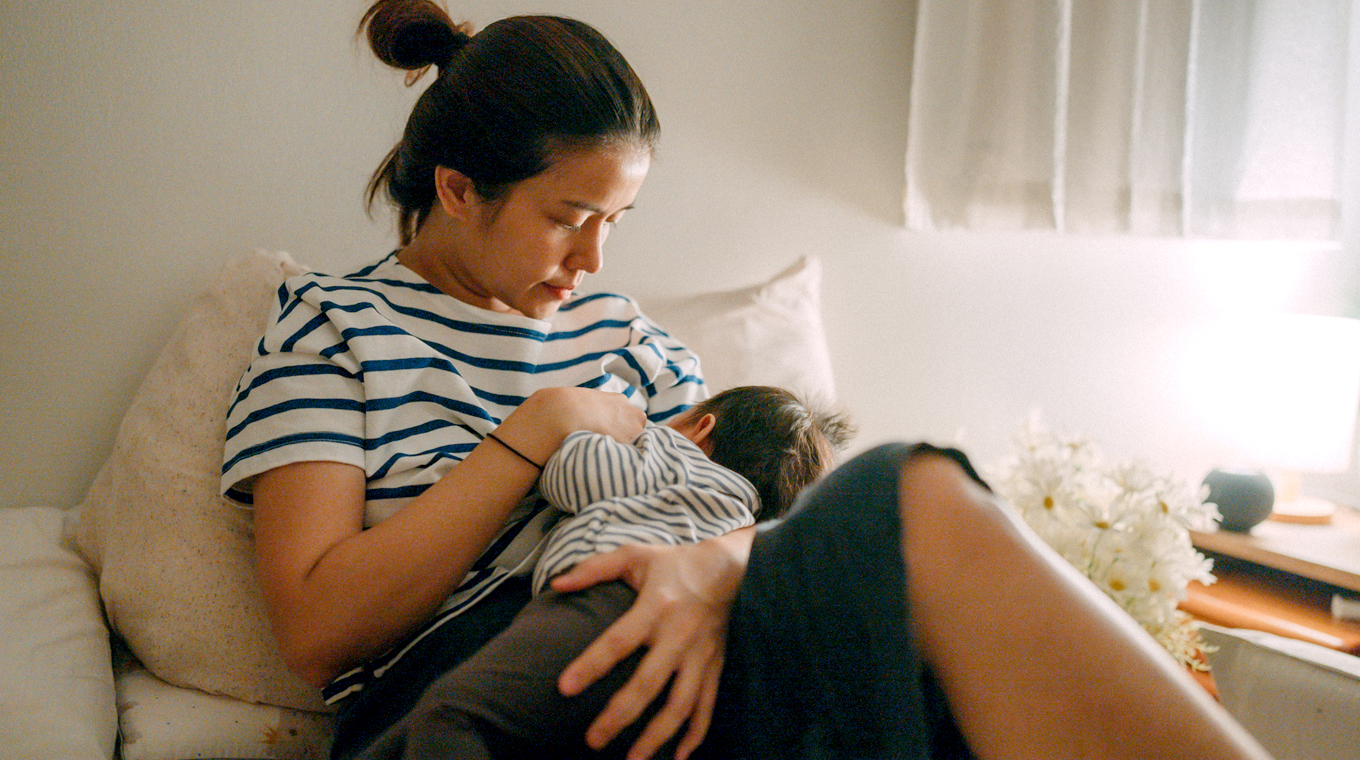
In this article
When you first begin nursing your infant, you may encounter a few breastfeeding problems here and there before you and your baby get the hang of it. It can be a challenge to get started and continue breastfeeding for some. Research indicates that 83% of babies are breastfed at birth with almost 47% of those still exclusively nursing at 3 months of age.
Sometimes, however, nursing doesn’t go as planned, and breastfeeding becomes a hindrance rather than that bonding time of connection and cuddles that you envisioned. Here are some of the top breastfeeding problems and solutions to help you and your baby work through these challenges.
Common breastfeeding problems

Problem: My baby won’t latch on properly
Lots of moms hit this roadblock before they can even start breastfeeding. Latching is the way your baby positions your nipple in his mouth to drink milk.
Solution:
To avoid sore nipples, breastfeeding techniques indicate that latching on is easier when you’re in a semi-reclined position. This can mean either sitting on a bed propped up with pillows or leaning back on the couch. Bring your baby’s tummy down on your body between your breasts. Gravity will naturally draw your baby inward to your breast and that contact — ideally skin-to-skin — will trigger baby’s reflexes and have them latching on properly.
Problem: I’m worried my baby isn’t getting enough milk
If only your breasts had ounces on them like baby bottles, it would be easy to know how much your baby is consuming. But they don’t, and many moms don’t know the signs that indicate their babies are full and satisfied.
Solution:
“Initially, an infant may take only 30ml (or 1 ounce) and may quickly increase to 90ml (or 3 ounces),” Ohio pediatrician Dr. Danielle Roberts explained to VeryWell Family. “This amount can be difficult to assess for breastfeeding babies, but we typically recommend 5 to 20 minutes on each breast. The variation in time depends on the mother’s milk letdown and how quickly that is occurring as well as how strong the infant’s suck is.”
Breastfeeding: Painful breast issues

Problem: Breastfeeding hurts
Breastfeeding shouldn’t be painful, nor should pain be something you just tolerate or chalk up to “that’s just the way it is.”
Solution:
Nipple pain occurs when babies are taking the breast too shallowly. As noted above, when baby is breastfeeding, latching on to the areola and the nipple is very important. This ensures that your baby won’t be gnawing on your nipples. The nipple should be positioned at the back of baby’s mouth. This keeps the nipple far away from their gums and tongue.
If you’re feeling any kind of pain, remove your baby from the breast and try again until it feels right. If your nipple is infected, or you think you may have mastitis, breastfeeding precautions must be taken. Consult your doctor, as you may need a prescription antibiotic.
Low milk supply and other breastfeeding challenges

Problem: Low milk supply
Most women’s bodies are capable of naturally producing enough milk to feed a baby. Your body, however, can sometimes think it’s time to slow down production, depending on what’s going on in your life or how often you nurse.
Solution:
If you understand the science of breastfeeding you can control your own milk supply. Most babies need to feed 8 or 9 times a day. They’ll drain the breast fully, signaling the breast to make more milk. If you start spacing out feedings to do sleep training or begin supplementing with formula, this could affect your supply.
“I really wanted to continue extended breastfeeding but my baby had other plans. Baby-led weaning was not part of my plan,” Jen D. told Mom.com. “I realize now that had I just continued to offer the breast I could have kept my supply up. I wish I had pumped regularly as well because every once in a while she would want to nurse. Sadly my supply had dried up.”
If you go back to work and neglect to pump as often as your baby would normally feed, you’re signaling your breasts to slow down milk production as if your baby were weaning. Even if you’re not feeding your baby as often from the breast, make sure to pump and drain the breasts fully as often as you did before. Also, make sure to offer both breasts each time you feed.
Problem: Leaking
While having leaky boobs can be embarrassing, it’s completely normal, especially if it’s happening around the time you usually feed your baby.
Solution:
Stick to your regular feeding schedule when you can — missed feedings or going longer between them can lead to leakage. Also, watch for engorgement; your breasts can become engorged when baby doesn’t nurse long enough. This can be both painful and annoying and also cause leakage. If you need to, express milk in between feedings to ease the issue. A good defensive strategy against leakiness? Cotton nipple pads fit snugly in a nursing bra and will absorb any leaks before they’re able to permeate through to your clothing.
These common breastfeeding problems shouldn’t dissuade you from continuing if you have your heart set on nursing your baby. With some trial and error and patience, you should be able to work through problems as they arise.
*low milk supply




